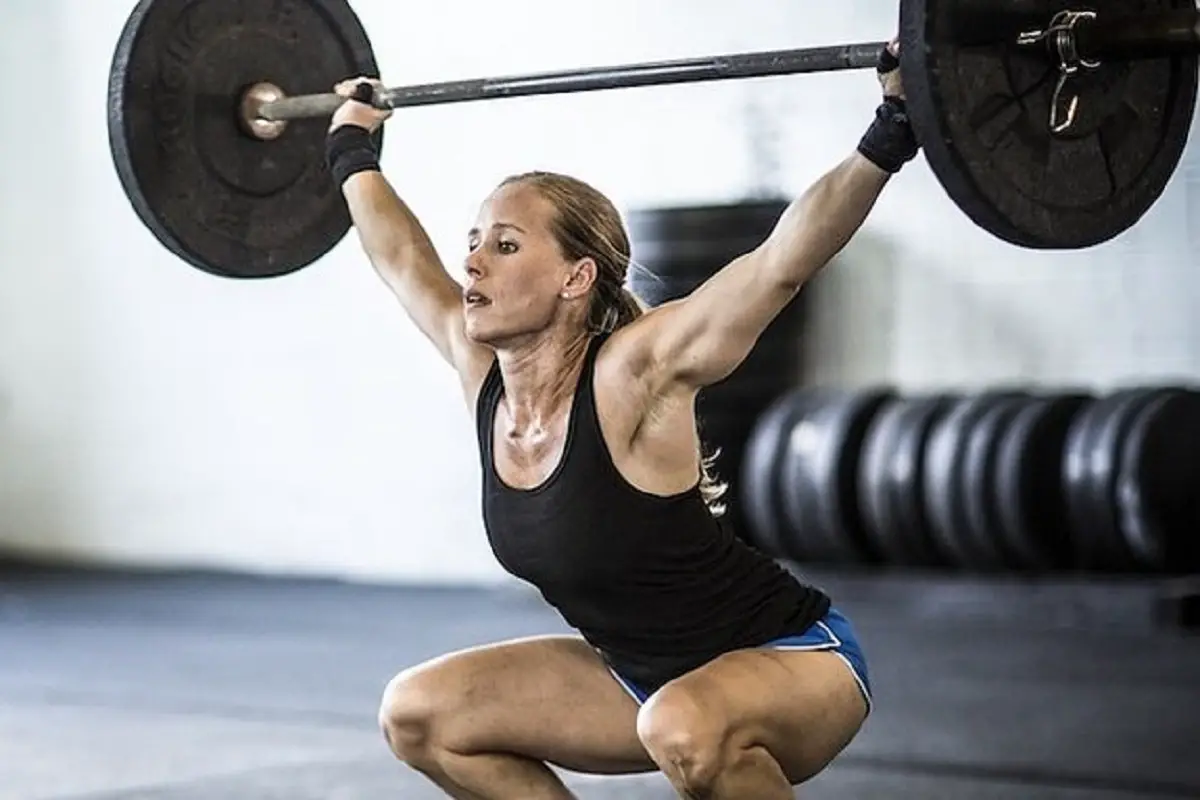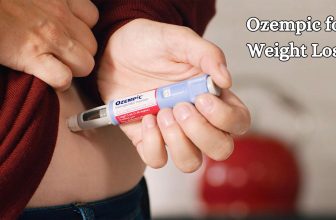How to Regain Muscle After Weight Loss? Tips for Success

It’s no secret that losing weight can be difficult. But what happens when the weight comes back? Many people are left wondering how to regain muscle after weight loss? It can be a daunting task, but with the right tips and advice, it is definitely doable! In this article, we will discuss some of the best ways to get your body back into shape. So read on and find out how you can achieve your fitness goals!
Losing weight is a common New Year’s resolution. However, many people find it difficult to maintain their weight loss goals. One reason for this is that they lose muscle mass in the process. Fortunately, there are steps you can take to regain your lost muscle. So, if you have been struggling with weight loss, keep reading! We have the information you need to succeed.
How to Regain Muscle After Weight Loss?
It can be hard to regain muscle mass after weight loss, but it’s not impossible. Here are some tips to help you on your way to success.
- First, make sure you’re eating enough protein. Protein is essential for rebuilding muscle tissue.
- Second, focus on heavy weights and low reps. This will help you build muscle mass faster.
- Third, take a multivitamin and mineral supplement to ensure that you’re getting all the nutrients you need.
- And finally, stay motivated and don’t give up!
Regaining muscle after weight loss takes time and patience, but it’s worth it in the end. So get started today and see the results for yourself!
Read More: How to Jumpstart Weight Loss After 30
Tips to Follow
When you lose weight, you also lose muscle. This is because your body burns both fat and muscle for energy when you are dieting. This can lead to a loss of muscle mass and an increase in body fat. If you want to regain the muscle that you lost, follow these tips for success!
1. Understand the Basics of Muscle Growth and How Your Body Composition is Determined
When you lose weight, you inevitably lose some muscle mass along with fat. The amount of muscle you lose depends on how quickly you lost the weight and what type of diet you were following. A crash diet or a very low-calorie diet will cause you to lose more muscle than a slow, steady weight loss.
To rebuild muscle after weight loss, you need to understand the basics of how muscles grow. Muscles grow in response to resistance training and adequate protein intake. When you lift weights, your muscles experience tiny tears which signal your body to start the repair process.
During the repair process, your body lays down new muscle fibers which are slightly larger and stronger than the original fibers. This process is known as muscle hypertrophy. To see results, you need to be consistent with your weightlifting routine and make sure you’re eating enough protein. Aim for at least 0.54-0.68 grams per pound of body weight (or 120-150 grams per day if you weigh 200 pounds).
2. Set Realistic Goals and Create a Plan That Fits into Your Lifestyle
Losing weight is only half the battle. The other half is rebuilding the muscle you lost.
Start by setting realistic goals. If you’re not sure where to start, consult with a certified personal trainer or Registered Dietitian Nutritionist (RDN). They can help you create a plan that fits into your lifestyle and ensures you’re getting the nutrients your body needs to rebuild muscle mass.
And don’t forget to focus on healthy habits like staying hydrated, getting enough sleep, and reducing stress levels. All of these factors play a role in muscle growth and recovery. By following these tips, you can successfully regain muscle mass after weight loss and improve your overall health in the process. Good luck
3. Eat a Balanced Diet that Includes Protein, Carbohydrates, and Healthy Fats
In addition to resistance training and adequate protein intake, you also need to make sure you’re getting enough calories and nutrients from healthy foods. Eating a well-balanced diet will help you rebuild muscle mass and improve your overall health.
Make sure to include plenty of protein-rich foods in your diet, such as lean meats, eggs, Greek yogurt, and quinoa. Carbohydrates are also important for muscle growth, so be sure to include healthy carbs like fruits, vegetables, and whole grains. And don’t forget to include healthy fats like olive oil, avocados, and nuts. By including all three macronutrients in your diet, you’ll give your body the nutrients it needs to build muscle mass.
In addition to eating a balanced diet, you need to make sure you’re getting enough sleep. Sleep is when your body repairs and rebuilds muscle tissue. So if you’re not getting enough shut-eye, your muscles won’t have the time they need to recover and grow. Aim for seven to eight hours of sleep each night.
4. Lift Weights and Do Cardio Exercises On a Regular Basis
Finally, exercise regularly. Strength training exercises are key for building muscle mass. But don’t forget about cardio exercises either. Cardio can help improve your cardiovascular health and also promote muscle growth by increasing blood flow to your muscles. So make sure to include both types of exercise in your workout routine.
You should also focus on compound exercises that work for multiple muscle groups at the same time such as squats, deadlifts, and presses. These exercises are more effective at building muscle than isolation exercises like bicep curls and triceps extensions. With these tips, you’ll be on your way to regaining the muscle mass you lost. Just remember to be patient and consistent with your efforts. It takes time and dedication to see results, but it’ll be worth it in the end.
5. Give Yourself Time to See Results – Don’t Get Discouraged If You Don’t Lose Weight or Gain Muscle Immediately
It takes time to see results, so be patient and consistent with your workouts.
If you’re looking to regain muscle after weight loss, these tips will help you achieve success. Losing weight can be a difficult process, but it’s not impossible to regain the muscle you’ve lost. With consistency and patience, you can reach your goals and improve your overall health.
I hope these tips have helped give you some insight into how to regain muscle after weight loss!
6. Stay Motivated by Tracking Your Progress and Sharing Your Successes with Others
One of the best ways to stay motivated when trying to regain muscle after weight loss is to track your progress. This can be done by taking measurements, keeping a workout journal, and/or taking progress photos. Share your successes with others by posting about them on social media or starting a blog. This will help keep you accountable and motivated to keep going.
Another way to stay motivated is to find a workout buddy or join a fitness group. Having someone to help encourage and motivate you will make the process easier and more enjoyable. You can also look for online forums or groups where you can connect with others who are working towards similar goals.
Finally, don’t forget to reward yourself for your accomplishments. This can be something as simple as buying yourself a new pair of workout clothes or taking a day off to relax and enjoy your results. Remember, the key to success is consistency. If you stick with it, you will see results.
These are just a few tips to help you regain muscle after weight loss. By following these tips, you will be well on your way to reaching your goals and achieving the body you’ve always wanted. So don’t give up-keep pushing towards your goal!
Exercises to Regain Muscle After Weight Loss
Here are some of the exercises you can do to regain muscle after weight loss:
- Dumbbell Rows
- Bench Press
- Leg Press
- Bicep Curls
- Triceps Extensions
These are just a few examples, but there are many more exercises you can do to help regain muscle mass. Just remember to focus on compound movements that work for multiple muscle groups at once, and to gradually increase the weight as you get stronger. Compound movements are key when trying to regain muscle after weight loss because they target multiple muscle groups at once. These moves include exercises like dumbbell rows.
Diets to Regain Muscle After a Weight Loss
You must have a proper diet to regain muscle after weight loss. You need to be in a calorie surplus, meaning you’re eating more calories than you’re burning each day. To do this, you need to track your macros (protein, fat, and carbs) and make sure you’re getting enough protein (at least 0.36 grams per pound of body weight). You also need to make sure you’re getting enough healthy fats (20-30% of your total caloric intake) and complex carbs (the rest of your calories after factoring in protein and fat). Creatine is one supplement that can help with muscle growth. It helps by providing your muscles with extra energy.
Workout Routine for Gaining Size and Tones
These workouts can help you in gaining muscles after weight loss
- Work Different Muscle Groups
- Do Compound Exercises
- Use Heavy Weights
- Eat A Lot of Protein-Rich Foods.
Wrap Up!
These tips will help you in your journey to regain muscle after weight loss! Well, that’s it for our tips on how to regain muscle after weight loss? We hope you found this information helpful and that it leads you down the path to success. Remember to take things slow and steady; Rome wasn’t built in a day, and neither will your new body be! Best of luck to you, just stay consistent with your goal. These are just a few tips that can help you on your journey to regain muscle after weight loss.
Read More: How To Cure Back Pain Naturally?





